Dominant white
Videos
Page
Dominant white (W) is a group of genetically related coat color alleles on the KIT gene of the horse, best known for producing an all-white coat, but also able to produce various forms of white spotting, as well as bold white markings. Prior to the discovery of the W allelic series, many of these patterns were described by the term sabino, which is still used by some breed registries.
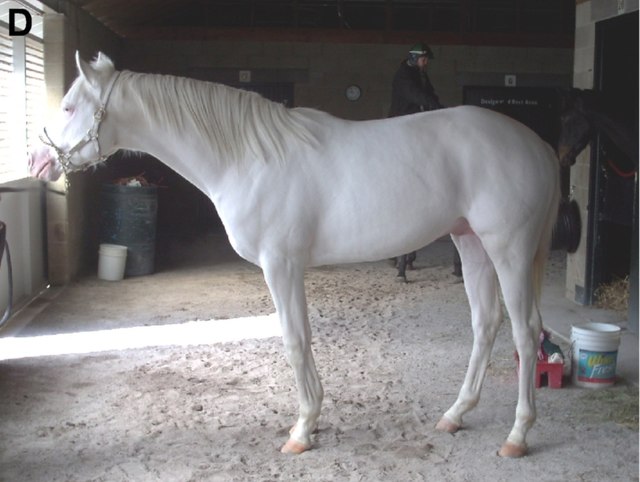
This Thoroughbred stallion (W2/+) has one form of dominant white. His skin, hooves, and coat lack pigment cells, giving him a pink-skinned white coat.
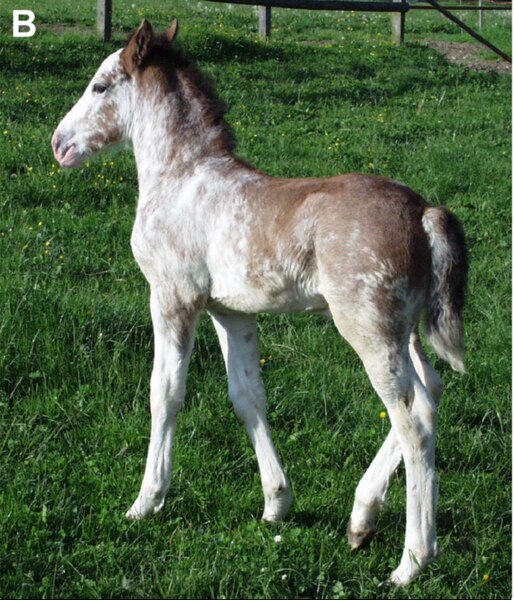
This dominant white Franches Montagnes colt (W1/+) lost almost all his residual pigment by the time he was 3 years old (below)
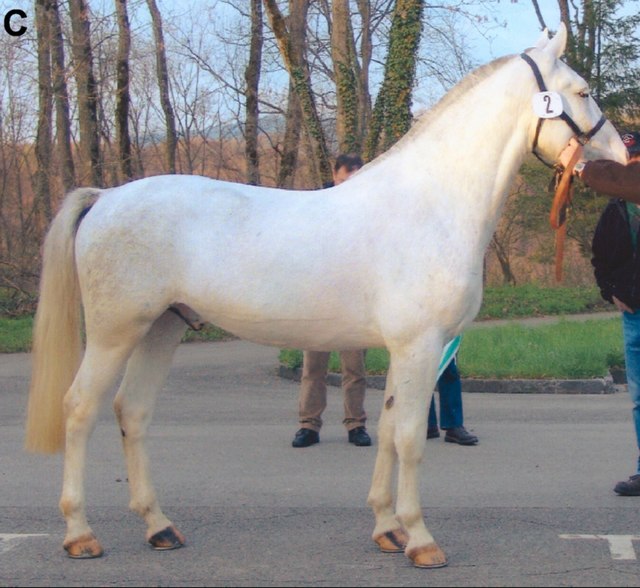
The same foal as an adult horse. Some white spotted horses lose pigment with age, even though they do not possess the gray gene. The underlying skin remains dark.
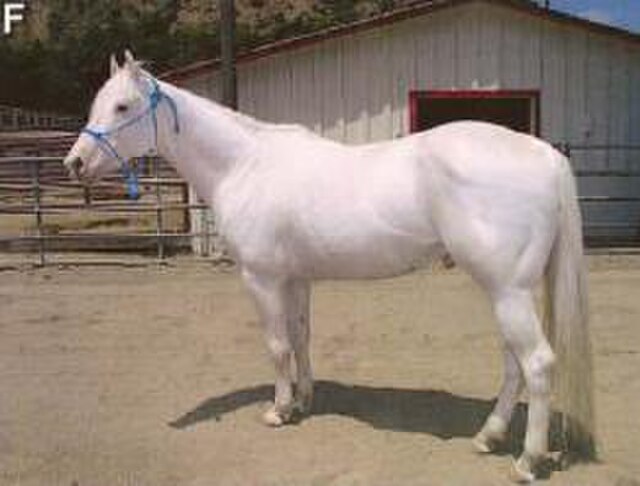
The Camarillo White Horse breed has a dominant white coat attributed to the W4 mutation.
Horse
Videos
Page
The horse is a domesticated, one-toed, hoofed mammal. It belongs to the taxonomic family Equidae and is one of two extant subspecies of Equus ferus. The horse has evolved over the past 45 to 55 million years from a small multi-toed creature, close to Eohippus, into the large, single-toed animal of today. Humans began domesticating horses around 4000 BCE, and their domestication is believed to have been widespread by 3000 BCE. Horses in the subspecies caballus are domesticated, although some domesticated populations live in the wild as feral horses. These feral populations are not true wild horses, which are horses that never have been domesticated and historically linked to the megafauna category of species. There is an extensive, specialized vocabulary used to describe equine-related concepts, covering everything from anatomy to life stages, size, colors, markings, breeds, locomotion, and behavior.
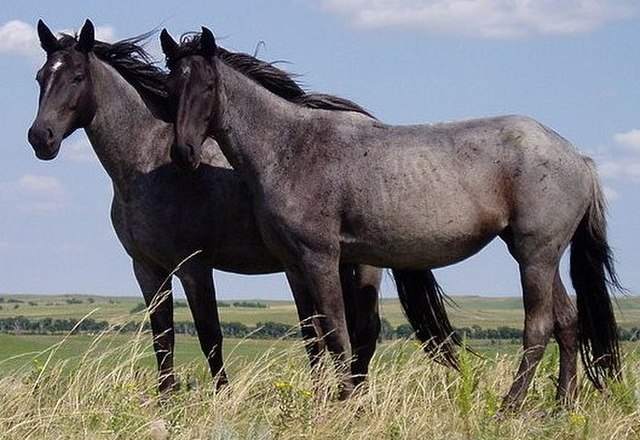
Horse

Points of a horse

Size varies greatly among horse breeds, as with this full-sized horse and small pony.
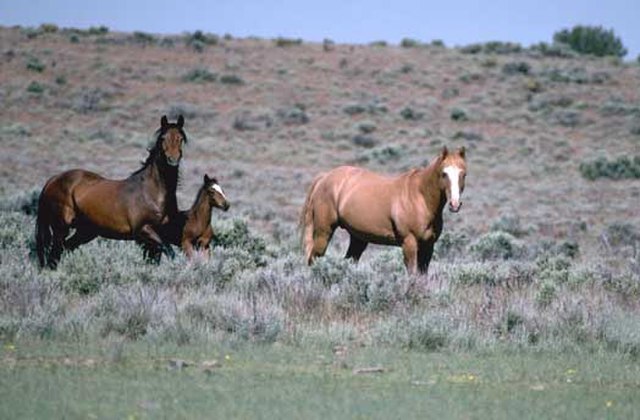
Bay (left) and chestnut (sometimes called "sorrel") are two of the most common coat colors, seen in almost all breeds.